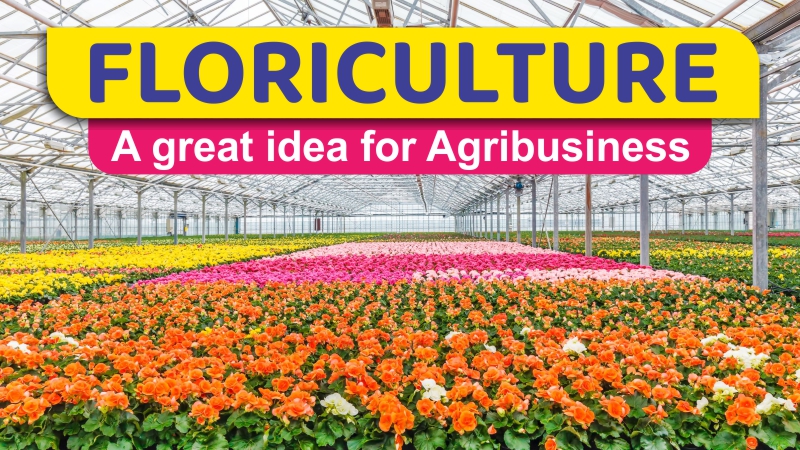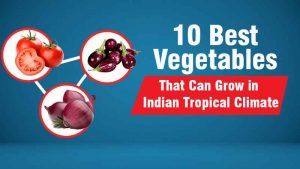In India Floriculture is an ancient farming practice having a massive ability to generate self-employment for small farmers. In recent times it is coming up with a profitable Agribusiness worldwide which improved the lifestyle and led to increase in demand for floriculture products. The production of floricultural products has seen a growth in the last 10 years. It consists of flower trade, production of nursery plants and potted plants, seed and bulb production, micropropagation, and extraction of essential oils.
What is Floriculture?
The science of growing and selling flowers and foliage plants is known as floriculture or flower farming. The development of flowering and appealing plants for direct sale or as raw materials in the cosmetics and perfume industries, as well as the pharmaceutical business, is known as floriculture. Gardening materials are also made from seeds, cuttings, budding, and grafting. Floriculture is the art and science of growing flowers to excellence in its most basic form. Floriculturists are horticulturists who work in this field.
In 2020-21, the country exported 15,695.31 MT of floriculture products worth Rs. 575.98 Crores/77.84 USD Millions to the rest of the world.
The Indian government has recognized floriculture as a sunrise sector with a 100% output status. Cut flowers, pot plants, cut foliage, seeds, bulbs, tubers, rooted cuttings, and dried flowers or leaves are the most common floriculture products. Roses, carnations, chrysanthemums, gerberas, gladiolus, orchids, anthuriums, tulips, and lilies are among the most important floricultural crops in the international cut flower trade. Gerberas, carnations, and other floriculture crops are cultivated in greenhouses. Chrysanthemums, roses, gaillardia, lily marigold, aster, tuberose, and other open-field crops.
Karnataka is first among states in terms of production, with a total of 253.24 thousand tonnes. Kerala is the top in floriculture in terms of area, with around 53.26 thousand hectares under floriculture cultivation. Tamil Nadu and Andhra Pradesh in the south, West Bengal in the east, Maharashtra in the west, and Rajasthan, Delhi, and Haryana in the north are the other important flower-growing states.
Opportunities for flower farming in India:
- The number of opportunities is growing as a result of the various uses of flowers like People’s purchasing power, urbanization, and aesthetic taste.
- The demand for flowers and flower-related products such as bouquets, garlands, and value-added products such as dry flowers is steadily increasing.
- The country’s unique agroclimatic conditions allow for the cultivation of all varieties of flowers at all times of the year.
Demand and Supply Of Floricultural Crops:
Floral demand is seasonal, as it is in most countries. There are two parts to the demand for flowers: a constant component and a seasonal component. Traditional and modern flowers have diverse elements that influence demand to some extent.
- Classical Flowers: Classical flowers are in high demand since they are used for religious purposes, household decoration, and garlands and wreaths. This demand is especially great in Kerala, Karnataka, Tamil Nadu, Odisha, and West Bengal, where the use of flowers for the purposes indicated is ingrained in their culture. Festivals and weddings account for the majority of seasonal demand. The desire is for specific flowers in general.
- Trendy Flowers: Institutions such as hotels, guest houses, and wedding gardens account for the majority of the steady demand for modern flowers. Urban areas have the most demand. With increased industrialization and globalization, individual consumer demand for modern flowers is expected to skyrocket, as the habit of “saying it with flowers” grows and more opportunities for flower-giving arise. Despite an increase in private demand for modern flowers, institutions continue to be the market’s leading customers. The price of these flowers is also affected by demand and fluctuates accordingly.
Marketing:
Cut flower marketing in India is a disorganized mess. Flowers are brought to wholesale markets in most Indian cities, which are generally located in open yards. The flowers are then supplied to local retail stores, which are frequently located by the side of the road, with different blooms arranged in enormous buckets. However, there are some good florist exhibition rooms in metropolitan cities, where flowers are preserved under controlled temperature conditions and where value-added service is prioritized. The government is now investing in the creation of auction platforms and better-organized florist shops with improved storage facilities to extend shelf life. Flowers are now packaged and transported from fields to retail marketplaces in a rather unscientific manner.
The flowers are packed in gunny bags, bamboo baskets, basic cartons, or simply wrapped in old newspapers and carried to markets by road, train, or air, depending on the type. The government, on the other hand, has aided in the purchase of refrigerated containers and has established a huge number of export-oriented units with superior pre-cooling chambers, cold stores, and refrigerated vans.
Government Policies and Programs:
The nodal institution in charge of floriculture development is the Department of Agriculture and Cooperation, which is part of the Ministry of Agriculture. It is in charge of developing and implementing national policies and programs targeted at attaining rapid agricultural expansion by maximizing the country’s land, water, soil, and plant resources. A thrust area for support is the production of cut flowers for trade. The Agricultural and Processed Food Products Export Development Authority (APEDA), the nodal institution for promoting Agri exports, including flowers, has launched a number of programs aimed at boosting the country’s floriculture exports.
The government has launched numerous schemes to promote and develop the floriculture sector, including “Integrated Development of Commercial Floriculture,” which aims to improve traditionally and cut flower production and productivity by making quality planting material available, producing off-season and high-quality flowers through protected cultivation, improving post-harvest handling of flowers, and training people for a scientific career. Many state governments have established distinct ministries to promote floriculture in their regions.
Floriculture has grown in importance as an agribusiness, giving job and entrepreneurship opportunities in both urban and rural locations. The National Horticulture Board assists anyone who wants to start a floral business. Entrepreneurs benefit from cold storage facilities and freight discounts provided by the Agricultural and Processed Food Products Export Development Authority. Commercial floriculture has been found to have a higher potential per unit area than other field crops, making it a viable business. Cut flower exports have gotten a lot of attention in the recent decade.
For more information download khetigaadi and khetiguru mobile application.
Get information about tractor, tractor price, tractor videos on khetigaddi platform.




